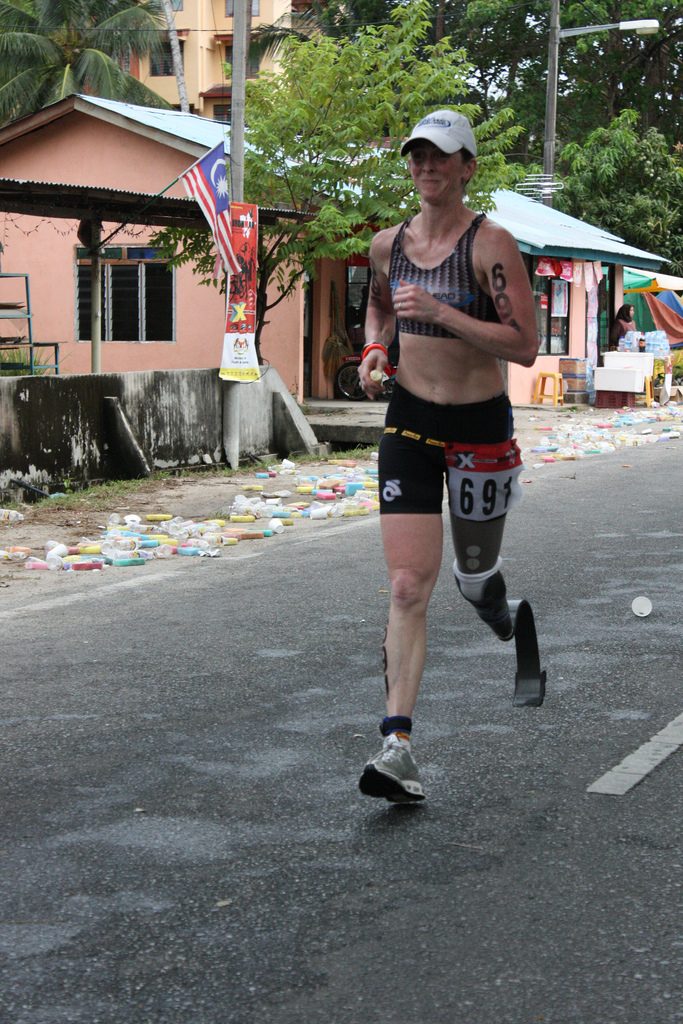Recently I wrote about the Boston Marathon bombing and my thoughts about this year’s pending race. I’m conflicted for sure … but one piece of my research that I thought was kind of amazing was how a former Paralympic athlete has reached out to bombing victims providing them with prosthetics.
New Yorker Amy Palmiero-Winters is nothing short of amazing. Losing part of one leg from a motorcycle accident in 1994, she didn’t let it slow her down one bit. No, really, I mean not one bit. She is the world’s fastest female in the marathon for amputees below the knee, and is the first female amputee to finish two big ultra endurance races, specifically the 100-mile Western States Endurance Run and the 135-mile Badwater Ultramarathon. Amy also ran Boston in 1993, before her accident, finishing in a time of 3:16.
With all that mileage, you think she might know a thing or two about running on prosthetics, right?
Palmiero-Winters is now stepping forward in her role as the sports program director of A Step Ahead Prosthetics and is helping the bombing victims reclaim their lives, no matter how athletic. She has worked with several Paralympic athletes over the years as they prepare for their races.
Prosthetics and the Paralympics
Of course a lot of athletes use prosthetics when they compete. Did you ever think about what they really need to do those amazing feats?
For instance:
Most runners use “blades” — curved frames — when they run. While this is great for athletic endeavors, most athletes swap out for another set of prosthetics which look more “human,” mostly so they fit into clothes better.
In fact, it’s gotten to the point with prosthetics that “techno-boosting” is a problem that officials are looking out for, almost as rabidly as steroid abuse. Officials want to make sure it’s a level playing field and that some athletes aren’t using cutting-edge technology that gives them an advantage over their competitors.
The Paralympics have Wrapped Up
All told, 144 medals were handed out during the Paralympics, with 18 of them to American athletes, while the Russians dominated with 80. I hope you saw a glimpse of what the Paralympics mean to the athletes while they were competing. Every athlete at that level must overcome overwhelming odds to be elite, and I think Paralympians have to overcome just a little bit more than their able-bodied peers.
What do you think? Were you inspired?
This post was created in partnership with Citi®. All thoughts and opinions are my own.


